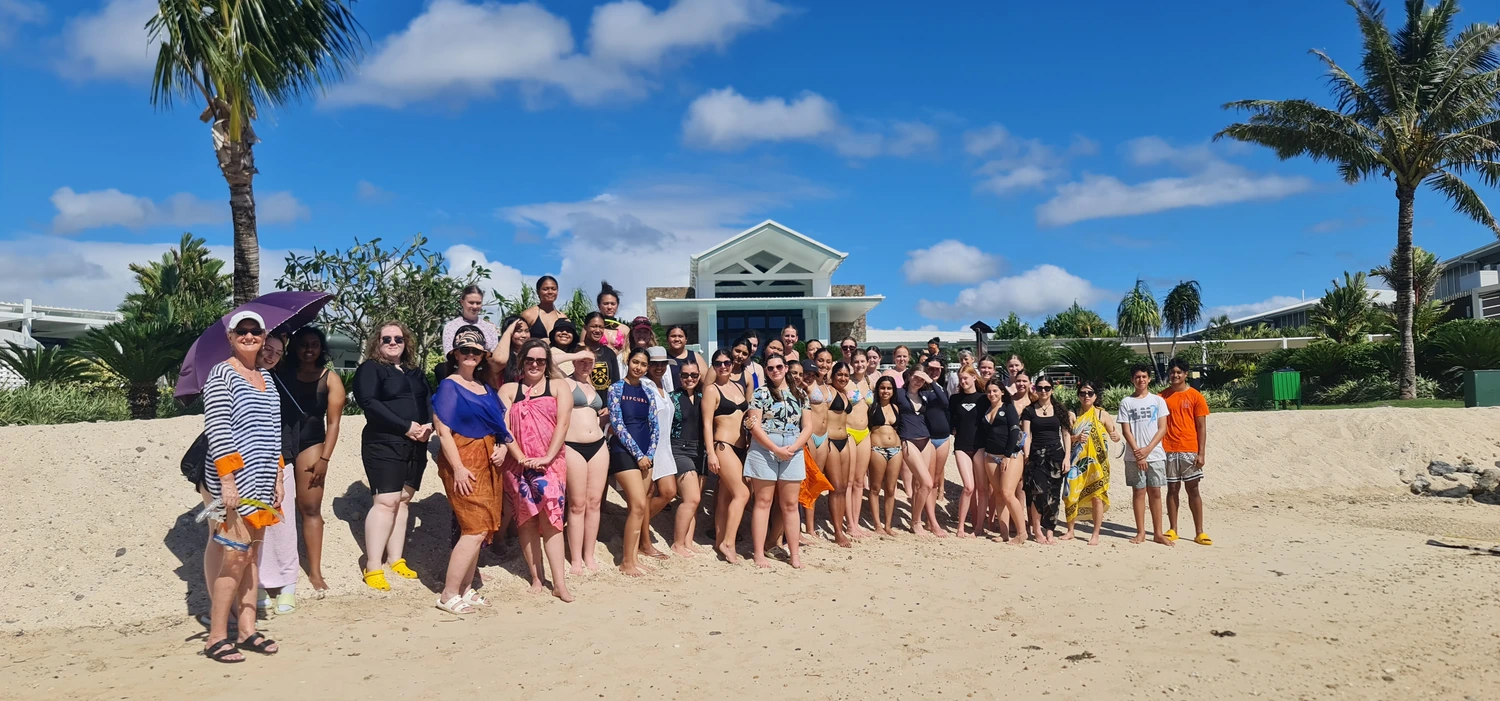Young conservationists help with coral restoration
 By Andrina Elvira Burkhart
•
14 July 2025, 6:10PM
By Andrina Elvira Burkhart
•
14 July 2025, 6:10PM
A group of eager students from Epsom Girls Grammar School in New Zealand, visiting Samoa, took part in a special coral reef restoration activity.
The program, led by Artificial Reefs Samoa, took place at Taumeasina Island Resort on Saturday last week and gave the students a chance to learn.
The program, which was also held earlier in the week at the group’s coral demonstration site in Apia, gave the students hands-on experience with coral planting and learning how to help damaged reefs. For many of them, it was their first time doing anything like this.
This activity was made possible through a partnership between Artificial Reefs Samoa and the visiting school. Although the full climate education program is worth $4,800, Artificial Reefs Samoa lowered the price to just $1,500 to help the students take part.
“We are passionate about equipping young people with the knowledge and tools to combat climate change,” said Fonoti Ferron Fruean, Founder of Artificial Reefs Samoa.
“Understanding the budget constraints faced by the visiting New Zealand students, we made a conscious decision to significantly subsidise this session. We aim to ensure that these dedicated young women receive critical hands-on experience in coral reef restoration and a deeper understanding of climate science, which is a core part of our mission to give back to our community and planet.”
The half-day session included learning and action: first, a fun and educational talk about how climate change affects the ocean, and then a snorkelling trip to the coral nursery, where students helped with coral planting.
One teacher said the talk was “comedic and entertaining,” and that it “engaged the students in the discussions.” For many students, it was their first time snorkelling and seeing fish, shellfish, and sea creatures living on the reef.
The program also talked about the tough parts of coral restoration. Students visited the coral nursery near the mangroves of Moataa village. There, the water carries mud and extra nutrients, which causes seaweed to grow too much and cover the corals.
The students were told honestly that the coral survival rate at this nursery is low. This helped them understand how hard this work can be.
Despite Challenges, Artificial Reefs Samoa continues to push forward, though limited resources remain a problem. Without a proper boat or engine, it's hard and risky to get to other better spots for growing coral due to strong currents. The team relied on kayaks loaned and a meeting space where the educational presentation at Taumeasina Island Resort, whose General Manager Tuiataga Nathan Bucknall, has been a key supporter of the initiative
“This initiative goes beyond just a session; it's an investment in inspiring future environmental leaders,” added Fonoti. “By making this high-value program accessible, we are directly contributing to their journey as advocates for our oceans and our planet. We were thrilled to have the media witness this important work and the enthusiasm of these young conservationists.”
One teacher said it was “the best [session] they had throughout their entire one-week trip to Samoa.”
With its real-life, hands-on approach, Artificial Reefs Samoa is not just helping to fix damaged coral reefs – it’s also building the next generation of young people who care deeply about protecting our oceans.
 By Andrina Elvira Burkhart
•
14 July 2025, 6:10PM
By Andrina Elvira Burkhart
•
14 July 2025, 6:10PM











